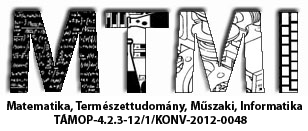Effect of unilateral labyrinthectomy on the expression of versican and tenascin-R in the vestibular nuclear complex
Előadás adatai
Unilateral labyrinthectomy (UL) results in postural deficits and disturbances in the eye movements in mammalian species. Symptoms spontaneously restore after a period during the vestibular compensation, which is a favorite model of neuronal plasticity in the adult central nervous system (CNS). Recent studies have shown that the extracellular matrix (ECM) molecules have an important role in the neural plasticity however their permissive or non-permissive roles have not yet been studied in the vestibular system. In the CNS, the ECM is composed of various macromolecules, the hyaluronan, chondroitin sulfate proteoglycans (aggrecan, brevican, versican, neurocan) and link proteins. The characteristic accumulation of ECM in the CNS is the perineuronal net (PNN) surrounding the perikaryon, proximal dendrites and the axon hillock of neurons in a mesh-like manner. In the present study the expression of versican and tenascin-R (TN-R) was examined following unilateral labyrinthectomy and subsequent compensation.
Under anesthesia, the left middle and inner ear was exposed and mechanically damaged with a surgical hook. After 1, 3, 7 and 14 days of survival, immunohistochemical reaction for versican and TN-R was performed on the vestibular nuclei.
The versican staining showed descend in expression on 1st, 3rd and 7th postop. days, and restored by day 14 in all vestibular nuclei. Whereas TN-R staining slightly faded on day 1, then further at 3rd and 7th postoperative day on the operated side. By 14 days PNNs were still not completely restored to the unoperated levels.
Our results showed that the UL is accompanied by the modification of versican and TN-R staining pattern in the vestibular nuclei and the time course of re-establishment of PNN is parallel to the improvement of vestibular symptoms.
Support: OTKA Bridging Fund, TÁMOP 4.2.4.A/2-11-1-2012-0001
Támogatók: Támogatók: Az NTP-TDK-14-0007 számú, A Debreceni Egyetem ÁOK TDK tevékenység népszerűsítése helyi konferencia keretében, az NTP-TDK-14-0006 számú, A Debreceni Egyetem Népegészségügyi Karán folyó Tudományos Diákköri kutatások támogatása, NTP-HHTDK-15-0011-es A Debreceni Egyetem ÁOK TDK tevékenység népszerűsítése 2016. évi helyi konferencia keretében, valamint a NTP-HHTDK-15-0057-es számú, A Debreceni Egyetem Népegészségügyi Karán folyó Tudományos Diákköri kutatások támogatása című pályázatokhoz kapcsolódóan az Emberi Erőforrás Támogatáskezelő, az Emberi Erőforrások Minisztériuma, az Oktatáskutató és Fejlesztő Intézet és a Nemzeti Tehetség Program



